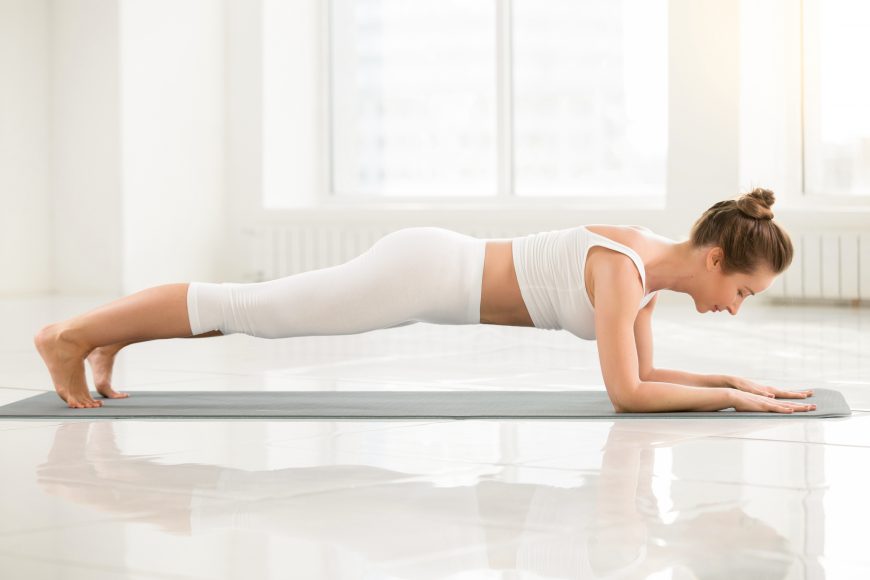With many of us spending more time than ever at home, DIY gyms and workouts have become all the rage. New fitness challenges, living room routines and kitchen yoga flows are popping up all over the internet. This new wave of exercise has brought with it a lot of opportunities to get moving in fun and creative ways. However, there is also potential for injury.
Among the most common injuries from DIY workout sessions are pulled or strained muscles, sprained ankles and injuries of the knee, shoulders or spine. While many may experience soreness post-workout, these injuries can prove to be disruptive and uncomfortable. As a physical therapist, I always recommend that my patients include a warm-up and cool-down component to their workouts. Each includes light activity designed to prepare or relax muscles and joints and acclimate your heart rate.
While many are finding themselves frustrated by gym closings and limited fitness opportunities, I want to emphasize that WoFH (working out from home) has many benefits, too. For many essential exercises, no weights or props are needed. Your body weight will do. Another benefit to working out from home is that no one is watching you, so it can be the perfect time to experiment with new movements that may be intimidating or awkward to do at the gym.
Avoiding common exercise-related injuries is now more important than ever, which is why I want to share some tips for keeping your spine, joints and muscles protected while you get your sweat on at home with the following exercises, chosen because of their ability to target major muscle groups.
Warming up
Warm-ups are a huge part of working out from home and should be a part of every workout you do. They give you an enormous kinesthetic bang for your buck, increasing your heart rate, mobility, blood flow and flexibility, all while decreasing your chances of injury. Warm-ups should be dynamic, meaning that you should be engaging your muscles while moving. Save the static stretches for after your workout. For a warm-up, you’ll want to do five to 10 minutes of movement that stretches your muscles, like jumping jacks, squats, lunges or jumping rope. Warm-ups are also a great way to activate the muscle groups you are trying to strengthen, establishing a mind-body connection.
Upper body
1. Rows, using a rowing motion, are a great exercise for strengthening and training your postural muscles without causing pain or aggravating injuries. They can be done with or without resistance, meaning you can practice rows with just your body weight or you can use weights, cans or other weighted objects from your home or resistance bands.
2. Another upper body exercise that can strengthen the whole body is the plank. Planking can have several variations, but the standard plank involves holding yourself up on forearms or hands while keeping the entire spine straight and elevated so that your body forms a straight line. Beginners can modify the exercise by using the knees instead of the feet to plank — or using their forearms. Planks are easy to do at home, require no equipment and can be modified in intensity by how long you hold them. Side planks, variations of planks that involve tapping the arms, knees or hips are also great to try.
Core/Abdominals
1. Mountain climbers are a favorite abdominal exercise that helps build strength and stability in the core. Beginners and people with shoulder pain should modify using the forearms instead of the hands to bear weight. To do a mountain climber, assume plank position and then lift a single leg and drive it toward the arm of the same side of the body, generating a crunch sensation in the abdominals. Repeat this movement, rotating right and left legs.
2. Another spine-friendly abdominal exercise is leg lifts. This gym-class classic has been around for decades for a reason. It works your lower abs without threatening your spine. Lie on your back on a firm surface. Raise one leg upward to the ceiling, return it to the floor and repeat on the other leg. You can flex your feet or point your toes for a different kind of stretch. Beginners may place their hands under the small of the back to protect the spine further as you alternate legs. (You can also bend your knee slightly as the leg is being raised to make the exercise easier.)
Cooling down
The goal of a cool down is to return your heart rate, body temperature and breathing rate to normal, pre-workout levels. Cool downs are their most effective when they achieve all of these things and stretch/relax the muscles you mobilized in your workout. The best cool downs are simple: Complete five to 10 minutes of low intensity movement (like walking) and then do static or dynamic stretches of your target muscles.
Sridhar Yalamanchili, PT, MSPT, is with Atlantic Spine Center in West Orange, New Jersey. For more, visit atlanticspinecenter.com.

